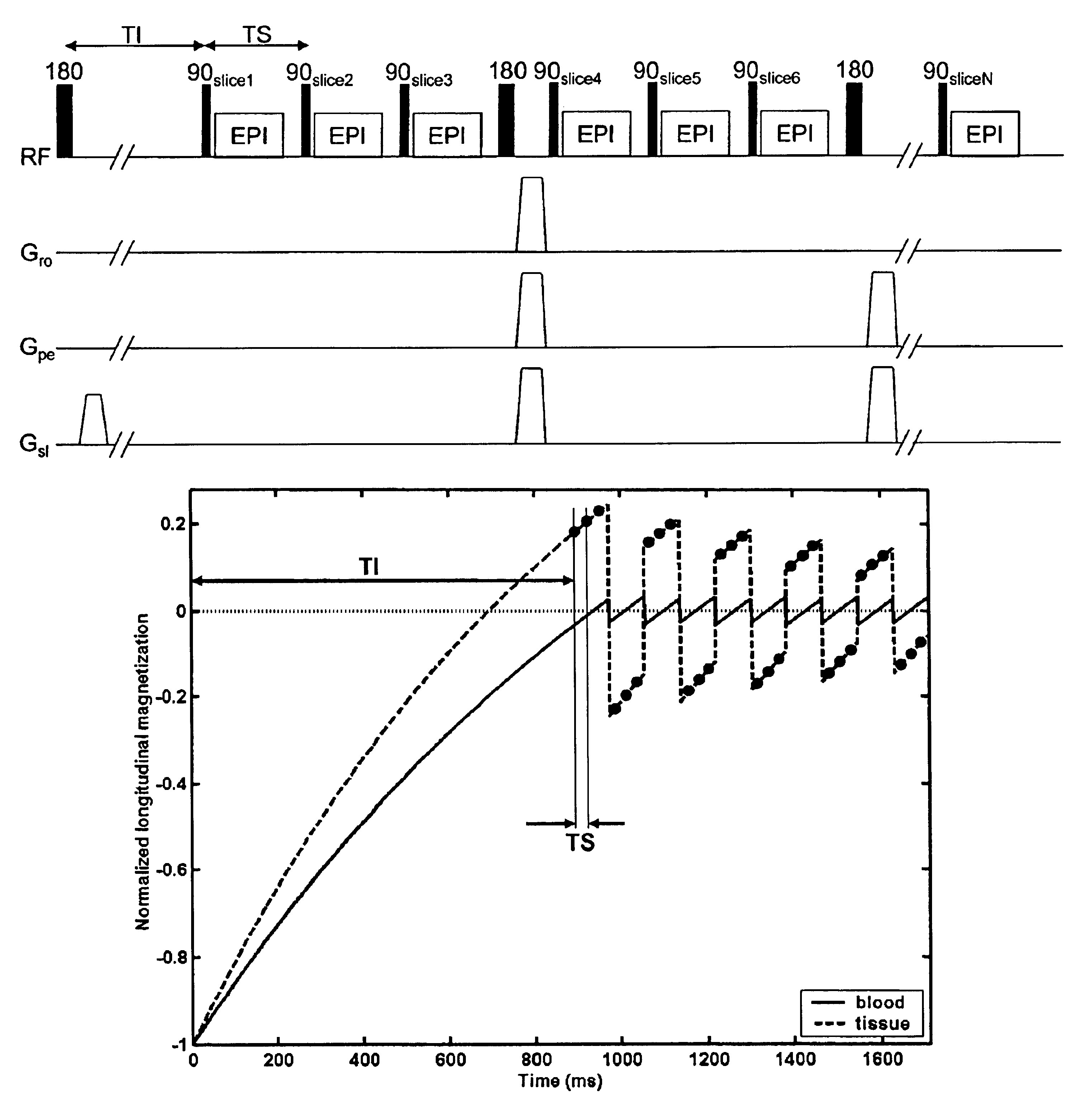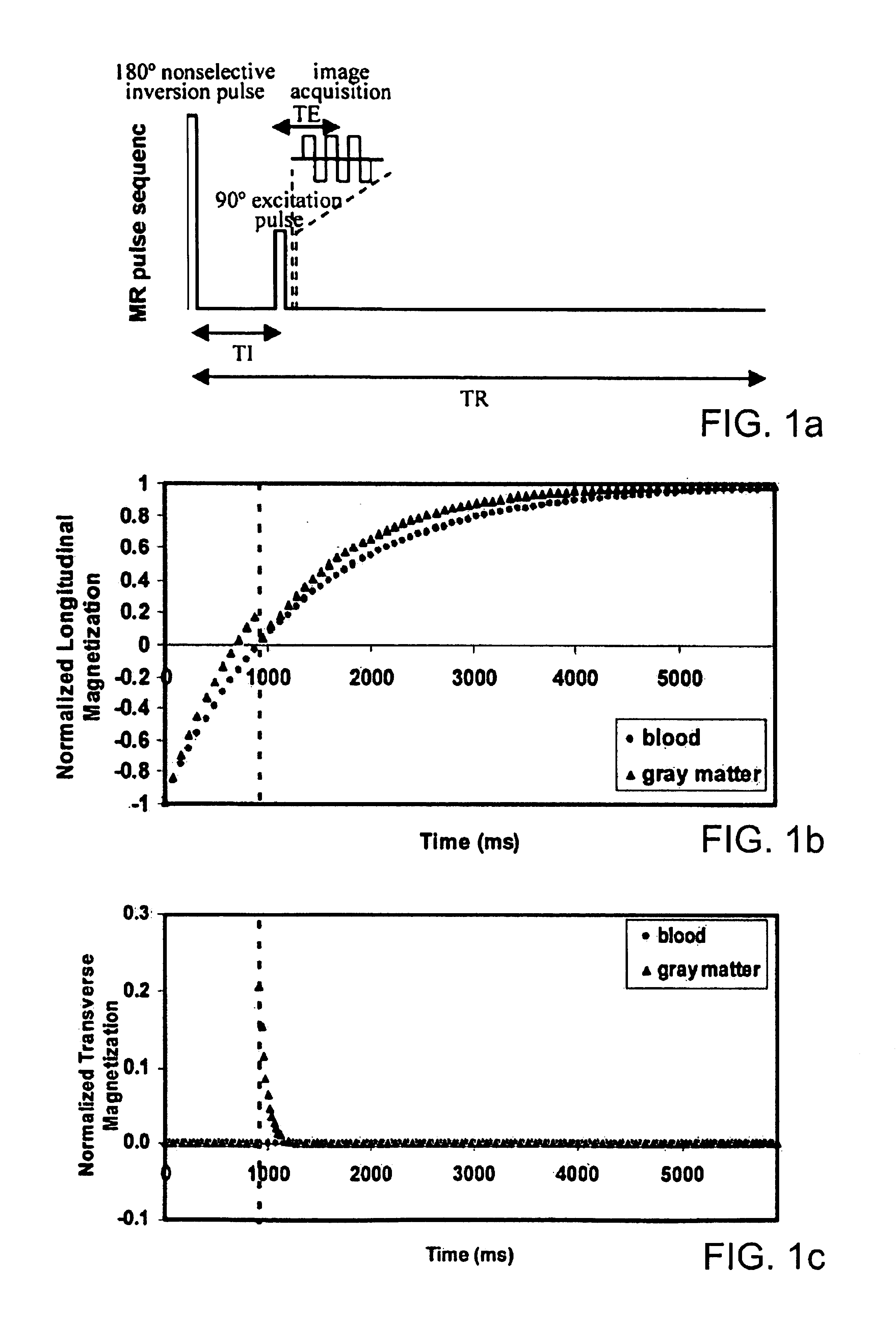Methods for multiple acquisitions with global inversion cycling for vascular-space-occupancy dependant and apparatuses and devices related thereto
a global inversion cycle and multi-shot acquisition technology, applied in the field of methods, apparatuses and systems for magnetic resonance imaging (mri), can solve the problems of limited approach to single slice or multi-shot 3-d acquisition techniques with limited readout time, complex multi-slice problems,
- Summary
- Abstract
- Description
- Claims
- Application Information
AI Technical Summary
Benefits of technology
Problems solved by technology
Method used
Image
Examples
Embodiment Construction
[0042]The present invention features a method for MR imaging particularly MR imaging in which RF inversion pulses are applied to a target area for essentially nulling one or more particular species, tissues or body components of the object to be imaged such as a mammalian body and acquisition of MR image data in one or more slices while keeping the signal from the one or more species, tissues or the like essentially nulled. The image data being acquired also can be 3-dimensional (3-D) image data. In its broadest aspects, and also with reference to the pulse sequence illustrated in FIG. 2A, the methodology of the present invention applies an initial preparation sequence (i.e., inversion pulse, a plurality or more of inversion pulses, a saturation pulse or other T1-prepration scheme) to the target area to null the magnetization of the selected tissues and at a time thereafter, preferably corresponding to the time that is optimal for the elimination of signals from the selected tissues...
PUM
 Login to View More
Login to View More Abstract
Description
Claims
Application Information
 Login to View More
Login to View More - R&D
- Intellectual Property
- Life Sciences
- Materials
- Tech Scout
- Unparalleled Data Quality
- Higher Quality Content
- 60% Fewer Hallucinations
Browse by: Latest US Patents, China's latest patents, Technical Efficacy Thesaurus, Application Domain, Technology Topic, Popular Technical Reports.
© 2025 PatSnap. All rights reserved.Legal|Privacy policy|Modern Slavery Act Transparency Statement|Sitemap|About US| Contact US: help@patsnap.com



